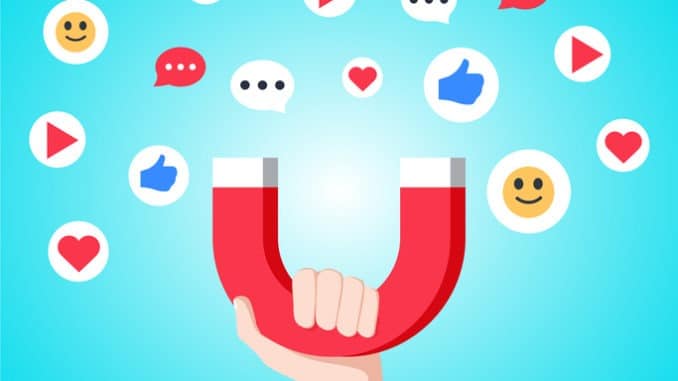
In 2020 we were forced to transition our businesses online and overhaul the ways in which we market ourselves to the world – but the way you used to advertise your business won’t work in a post-COVID, digital-first decade
Here are three top marketing trends that you need to know about in 2021 to get your business in front of your ideal customers and build an authentic community around your brand.
1. Social commerce
Gone are the days where we used to scour the high street for the best deals on the new gadgets, appliances or clothes we wanted; now, everything is just a few clicks away from landing on our doorstep.
A report published by Alvarez and Marsal and Retail Economics, earlier in 2020, estimates that 17.2m British consumers – that’s close to 25% of the UK’s total population of 66.6 million – plan to make permanent changes to the way they shop following the COVID-19 pandemic.
Lockdown restrictions saw an online shopping boom – so much so that Amazon’s stock price rose by 86% in 2020 and its founder, Jeff Bezos, saw his net worth surpass $200 billion for the first time. With physical retail stores closed, where else could we go?
However, Amazon wasn’t the only winner here. Social media networks have responded to the demand for seamless online shopping too. Facebook and Instagram have introduced shoppable content and storefronts on your profile; TikTok has introduced shoppable videos and YouTube is, reportedly, working on building shoppable elements into their videos too.
What are the implications of this? Your customers and clients can buy your products without even leaving their social media app. Even in 2018, in a pre-pandemic world, 55% of shoppers purchased a product through a company’s social media account, with 87% of buyers claiming that the social media content on the brand’s page helped them make a decision on a purchase (Avionos, 2018, and Absolunet, 2019).
If your company has a Facebook or Instagram page, and you sell physical products, consider how you can use their new shop features to make the purchasing experience smoother for your customers.
2. Human-to-human marketing (H2H)
Now you may be thinking, “But we’re B2B, having a storefront on social media won’t work for us.” I’m going to challenge you to think again.
Whether you’re B2B or B2C, at the end of the day we’re all H2H. Every purchase decision, negotiation and transaction occurs between two or more human beings – and we know that human beings spend an awful lot of time on social media!
What does H2H marketing look like? It’s all about bringing personality to your brand and the way in which you interact with your customers and clients through social media; social media is supposed to be ‘social’, after all.
For the longest time, brands were fenced off from their customers and perceived to be very impersonal and corporate entities. Nowadays, social media facilitates comments, replies and instant messaging between customers and brands. Having conversations with your customers isn’t just a ‘nice thing to do’, it’s an expectation. It’s no wonder that customers who message a brand on social media, and get a prompt reply, are more likely to follow through with their purchase, buy from that brand again, and recommend that brand to their friends and colleagues. This ripple effect is unimaginable.
Social media customer service could be what makes or breaks your business in 2021 and beyond. Here are a few things that you can action in order to optimise your customer experience.
- Delegate community management to one of your team members and have them reply to all social media comments and messages at intervals throughout the day.
- Set up automatic replies on Facebook and Instagram thanking customers for sending you a message and confirming that a colleague will be replying shortly.
- Encourage your social media followers to message your company page through calls-to-action in your posts – for example, “Send us a message if you’d like to know more.”
3. Video content
On average, 73% of people say they’re more likely to buy an item after watching a video explaining the product – and product videos increase the chance of purchase by 144% (Platt, J., 2014 and Hubspot, 2020).
Even in the B2B world, your customers and clients are tired of seeing the same stock photos, promotional posts and product images; they want to be informed, entertained and inspired. In fact, over 60% of LinkedIn users say they engage with content because they find it educational and/or relevant to them.
Video content is a great way to bring your brand to life, inject some of that personality we mentioned in the H2H marketing concept a minute ago, and help your customers make a more informed purchase decision. Here are a few examples of video content that you could create for your brand.
- Product spotlights (show, don’t tell).
- How to’s or demonstration videos for your products.
- Answers to frequently asked questions about your products.
- Testimonials and reviews from your customers.
- Behind the scenes of your business and production process.
- Introduce your team and their stories.
In summary, the three key social media trends you need to know about – and take action on – in 2021 are:
- Social commerce and shoppable social media.
- Human to human marketing.
- Video content.
Which one are you going to get started with first?


Be the first to comment